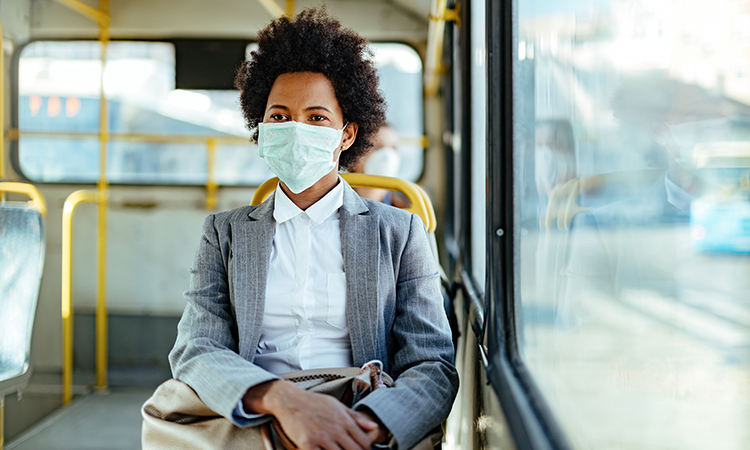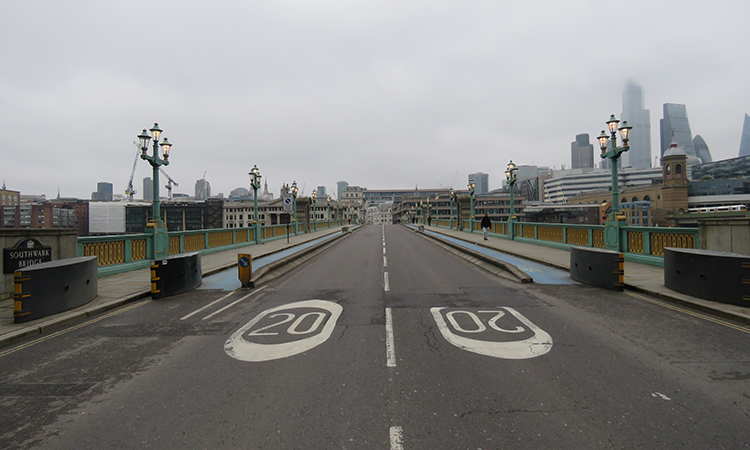How COVID-19 changed travel after the world stopped moving
- Like
- Digg
- Del
- Tumblr
- VKontakte
- Buffer
- Love This
- Odnoklassniki
- Meneame
- Blogger
- Amazon
- Yahoo Mail
- Gmail
- AOL
- Newsvine
- HackerNews
- Evernote
- MySpace
- Mail.ru
- Viadeo
- Line
- Comments
- Yummly
- SMS
- Viber
- Telegram
- Subscribe
- Skype
- Facebook Messenger
- Kakao
- LiveJournal
- Yammer
- Edgar
- Fintel
- Mix
- Instapaper
- Copy Link
Posted: 10 March 2021 | Ru Roberts | No comments yet
Ru Roberts, UK Country Manager at Waze, examines how transport habits have changed a year on since the COVID-19 pandemic arrived in Europe, and explains how cities can get people out of cars and back into shared transport in the months to come.


March marks a year since COVID-19 placed life as we know it on pause. The global pandemic fundamentally changed our patterns of movement, with countries around the world putting travel bans and social distancing measures in place to help curb the outbreak.
Shifts in habits
During the first UK lockdown in March 2020, we immediately saw 81 per cent fewer kilometres driven nationwide, compared to February. Reduced numbers of cars on the roads meant less congestion: even peak commuting hours saw free-flowing traffic, according to our Waze for Cities partners at Breathe London and EDF.
As we continue to navigate the pandemic and restrictions fluctuate, Waze data shows vehicle use is inching closer to pre-pandemic levels as people continue to make journeys for shopping and outdoor exercise. In February 2021, driven kilometres were up 46 per cent on March 2020, with current levels in the UK sitting at around -35 per cent of driven kilometres prior to the pandemic (as of 10 February).
Despite the reduction in travel, essential journeys are still being made and we are seeing individuals rely more on single occupancy vehicles (SOVs) than public transport. This is largely due to the risk of virus transmission, in addition to reduced public transit services. Cars are no longer just an alternative to public transport, but an increasing necessity, as people aim to minimise public interactions.
The impact of behavioural changes in vehicle use
With restricted windows of opportunity for travel, our journeys have become more fragmented. If left unaddressed, increased vehicle reliance and shifts in mobility patterns will create a domino effect in several areas of society:
- Environmental damage: the reliance on SOVs means that more climate-friendly transport systems, such as vehicle sharing, could now be further away than originally hoped. The pandemic gave us a glimpse of what low-traffic cities could look like as emissions dropped by 36 per cent in the first four weeks of lockdown. But now, with people spending more time in their cars, we could be creating long-term air quality issues in busy areas.
- Reduced public transport: falls in public transport usage are triggering transit budget cuts and reduced revenue means a reduction in services. A key example of this is in the North of England, where budget cuts to key transport initiatives could cause significant disruption in the future. With the number of cars on the roads starting to rise, if we don’t act now, unreliable transport services could encourage more driving than pre-pandemic.
- Driver stress: in larger UK cities, traffic build-up has been an issue for many years. The average UK driver spends almost eight months of their life in traffic jams, which can often affect stress levels and driver safety. When we return to workplaces, the increasing dependence on cars could exacerbate critical issues of wellbeing during journeys.


Some of London’s busiest streets were deserted during the early stages of the pandemic
Motorists are spending longer in SOVs but mostly making essential journeys, so footfall to small businesses has been severely reduced, and many have reduced staff numbers or paused operations entirely.
During the 2020 holiday season, Waze launched an initiative to drive visits to those companies severely impacted by the pandemic. Small business owners contributed information like their address, contact details and opening hours via a simple form to Waze, which was then added to the map by Waze’s volunteer community of Map Editors. The information helped Waze users nationwide easily find these store locations using the most up-to-date information, encouraging them to shop locally when needed.
As restrictions lift and regular journeys resume, solutions for these issues must be found to encourage a confident and safe return to normal life. By better arming local authorities and governments with data and technology, we can use insights to better communicate with drivers and facilitate the return to roads in a more stable manner.
With the introduction of slow streets and businesses like restaurants using more outdoor space for seating, there will be a lot of city replanning needed post-pandemic.
Waze data can help cities to inform how they need to reshape road infrastructure, through two-way data-sharing. Partners who have access to the platform receive real-time traffic insights to help them evaluate how they can improve the way we move around our local areas. For example, if a restaurant has opened up seating in a car park, planners know that alternative parking options will be needed for motorists in the area.
For motorists, using apps like Waze, which are powered by crowdsourced, real-time data, can help to ensure that time spent in the car is used as efficiently as possible in the new normal. The app can give you the quickest route to your destination, reducing your emissions and time spent in the car. Waze could even help you to discover new and improved routes along your regular journeys, such as your daily commute or school run.
Finally, when we’re able to ride-share again, cities and businesses can incentivise citizens and employees to take longer trips by carpooling together, providing an affordable, practical mode of transport for daily journeys. Local authorities could also support this solution through congestion pricing for SOVs and by expanding dedicated high-occupancy vehicle lanes.
Looking to the future
We are now at a pivotal moment. People have seen the benefits of cleaner air and quieter streets during lockdown, yet many miss the freedom that other methods of transport bring, whether jumping on the tube or getting a lift with friends.
As the world begins to open up again, we must look to ease the burden of vehicle dependency by encouraging people to make the most of publicly available forms of transport, such as shared bikes, scooters and carpooling. We must continue the momentum towards cleaner and alternative transport solutions to avoid the fallout of an influx of cars on the roads by revisiting city layouts to accommodate.
With hopes that the majority of the UK public will be fully vaccinated by late 2021, the progressive steps that we were making to improve transport infrastructure must resume.
Related topics
Air Quality, Alternative Power, COVID-19, Infrastructure & Urban Planning, Journey Planning, Mobility Services, Passenger Experience, Public Transport, Sustainable Urban Transport, Transport Governance & Policy, Vehicle & Passenger Safety
Related modes
Ride-sharing & Car-sharing
Related organisations
Breathe London, EDF, Waze







